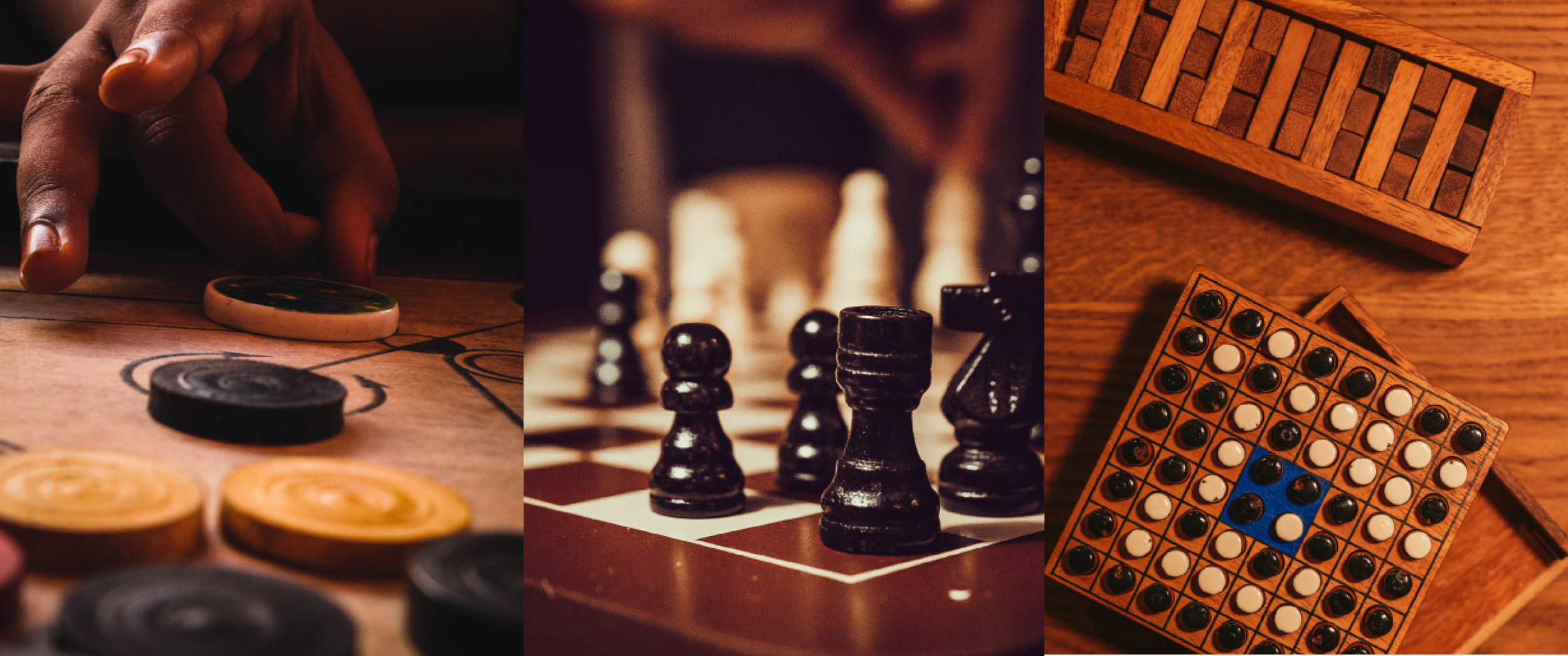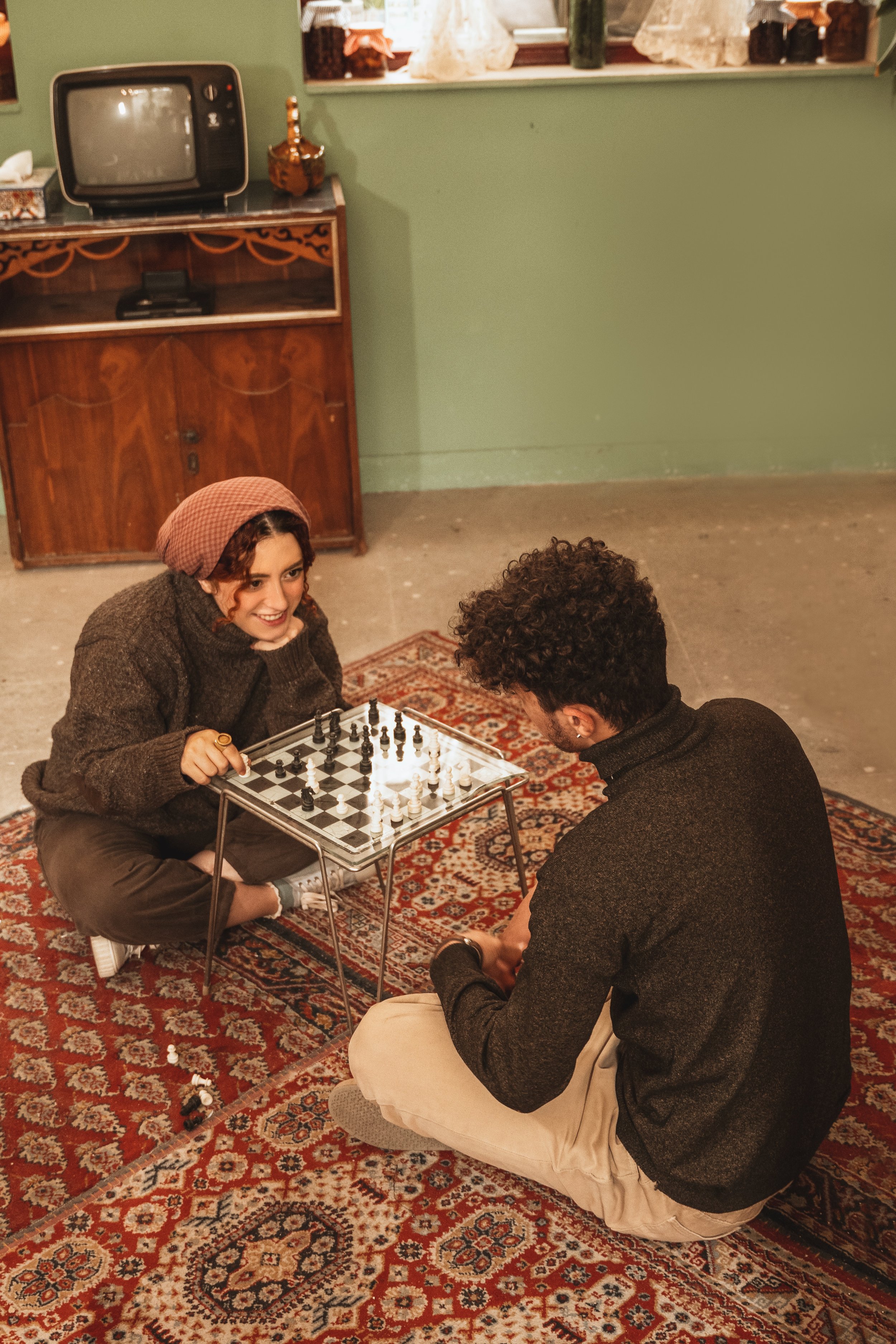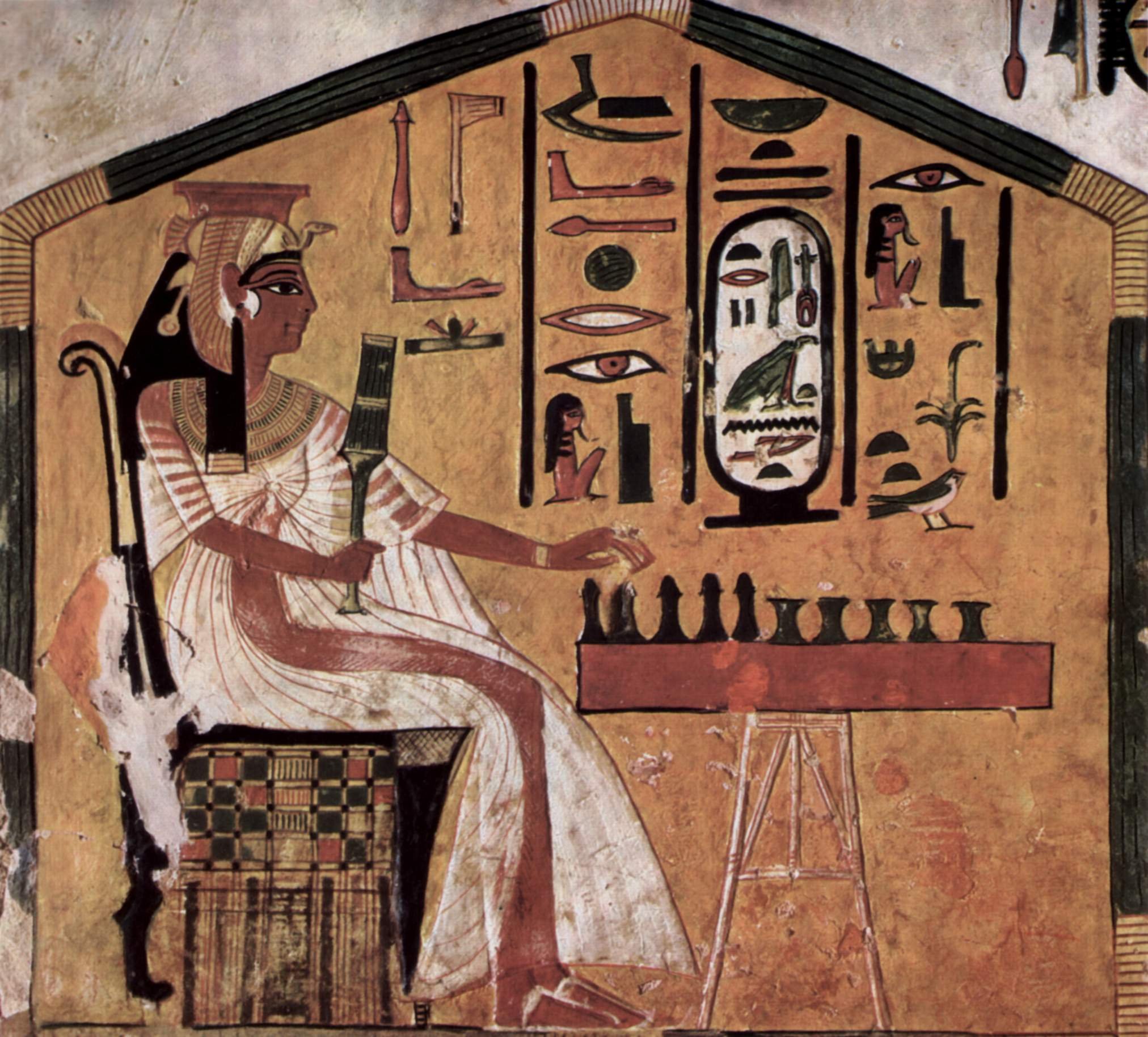
get your game on
Chess as it is known today can trace its roots back to India, over 1500 years ago. The game that would develop into chess was called Chaturanga. Chaturanga is a similar game to Chess, being played on a grid. The board was 8 x 8, and uncheckered, unlike Chess. Not everything is known about the game, some boards appear with markings, the purpose of which is unknown. The exact abilities of the pieces is also unclear, with lots of uncertainty surrounding the moves of the elephant. Many of the Chaturanga pieces have been later translated into the Chess pieces known today. The objective is also the same as in Chess, to checkmate the opponent’s King. The game is thought to have inspired many other games, such as Shogi.
This game spread to the Muslim world by means of invasion. Chess would become known to Europe though Muslim Spain, continuing to evolve throughout the Medieval years. By 1500 CE, Chess is thought to have settled into the game that is known today.
Photo by Joel Heard on Unsplash
Although the rules have stayed mostly the same for hundreds of years, many schools of thought have originated on the best way to play Chess. One notable example is that of Romantic Chess, popular from about 1800 to 1880. This type of Chess play was known for quick maneuvers, as opposed to long term planning. It is notable for the fact that winning was often considered secondary to style. Dramatic sacrifices are considered essential to Romantic Chess, where giving up essential pieces like the Queen and Knight in order to secure a shocking victory are the pinnacle of performance. These ideals were partially based on the idea that attack and offense was more honourable than defense.
This was rejected by thinkers Louis Paulsen, Wilhelm Steinitz, and Paul Lasker. These two changed the way the game was played, focusing instead on a slow buildup and strong defence in order to win a long term victory. Steinitz is perhaps most well known for pioneering Positional Chess, sometimes called the Classical School. The School focused on occupying the board with one’s pawns, taking advantage of small advantages over the long term as opposed to the quick and decisive attacks of Romantic Chess.
Positional Chess evolved into Hypermodernism Chess. The main difference is the control of the center of the board with one’s pieces, as opposed to an occupation with pawns alone. Hypermodernism brought about the most well known group of Chess players being that of the Soviet Union. Beginning in the late 1920s, Soviet players dominated the game. They held records from 1927 to 2006, with only a few notable exceptions.

Soviet Chess players traded the title of world champion back and forth until in the early 70s, Robert James Fischer, better known as Bobby Fischer appeared on the sense. Fischer was able to defeat Boris Spassky in a remarkable comeback. Fischer was a character, refusing to play at certain venues or events. He also refused to defend his title won from Spassky three years later aft er the FIDE, the body governing competitive Chess refused to agree to his rules for how the match should be played. Much discussion was held around the so-called “9-9 clause,” that would require the challenger to Fischer to win with a two round lead. He only re-emerged in 1992 to play a match against Spassky in Yugoslavia, despite an ongoing embargo, winning again, he disappeared once more.
Photo by Ali Karimiboroujeni on Unsplash
With the world champion title back in Soviet hands in the late 70s, attention slowly turned to Chess algorithms and computers. In the 1980s. Garry Kasparov began to make use of computers in order to practice and hone his own game. He was able to beat a number of computers at the game, however, this changed with his match against Deep Blue in 1997. This was actually a rematch between man and machine, their first match having taken place a year prior in 1996. This match held far more significance than the Fischer-Spassky games, pitting East and West against each other at the height of the Cold War. Kasparov vs. Deep Blue was a battle between humankind and a machine, a battle which Kasparov ultimately lost, marking the first time a computer was able to beat a Chess master.
Cluedo or Clue as it is more commonly known in North America is a three to six player murder mystery board game. Originally inspired by secret murderer party games and English detective literature; the game features the players travelling around a mansion, attempting to deduce who committed the murder, in what room, and with what weapon. The game was designed during air raids on Birmingham during World War Two, material shortages after the war would prevent the game from going into production until 1949. The game is remarkably similar to a traditional card game called The King of Hearts has Five Sons. Anthony E. Pratt, Cluedo’s creator, claims not to have drawn on the card game at all when designing his board game.
Flickr user: Didi
The game’s English name, Cluedo, is a combination of ‘clue’ and ‘ludo’, a Pachisi-esque game popular in the United Kingdom. The name was changed for North American audiences as it was thought they wouldn’t understand the reference being made to Ludo.
Original versions contained many more weapons, rooms, and suspects. Mr. Brown, Mr. Gold, Miss Grey, and Mrs. Silver were all cut. The Gun Room and Cellar were also removed, as were the Bomb, Syringe, and Shillelagh, a type of walking stick that can be used as a weapon, fireplace poker, axe, and poison. Cards were also placed in rooms as opposed to being dealt into hands, with various tokens being expended for certain actions being taken.

The main cast of Cluedo has remained constant for much of its existence, although depictions sometimes change, the characters, weapons, and locations all retain the same names. The suspects are all based on typical character archetypes. The weapons vary between versions, with items like the Dagger being known as the Knife in American releases. Interestingly, in the original version, neither of the Revolvers is a revolver, but two different pistols of American and European make respectively.
Pachisi being played in Tamil Nadu with Tamarind seeds and stones. Wiki Commons.

The earliest known board games appear in Egypt and the Middle east around 3500 BCE, however, some have argued that stone carving are game boards for Mancala, if so, this would place the earliest board games as dating to around 5800 BCE.
Mancala is a game popular the world over, although it is particularly prominent in Africa, the Middle East, and the Caribbean. It has many variations of rules, although they all consist of moving seeds, beads, or other counters between divots in a board.
Senet, one of the oldest known board games. Wiki Commons.
The Royal Game of Ur has had its rules preserved, it is slightly more modern than Senet, dating to 2500 BCE. It involves moving all of one’s pieces the length of the board before your opponent can do so.
Many other ancient board games have maintained their popularity. Chess and Pachisi originated in India, with Backgammon hailing from what is now modern Iraq. Go, which originated in China is considered to be the oldest game that has remained continuously played.
The rules tablet dated 177 BC (British Museum) Wiki Commons.
Senet is an ancient Egyptian game, played on a board with 30 spaces, and several movable pieces. Since the game fell out of popularity when the Roman Empire took control, it’s rules have been lost to time, though some facts remain, such as the ability to block opponents and the use of casting sticks to determine chance, as opposed to dice.

Social deduction games have exploded in popularity with people of all ages following the breakout success of 2018’s Among Us. These games have existed for almost 40 years though, starting out as simple social games designed in the 1980s.
Dmitry Davidoff developed the first social deduction game called Mafia in 1986 while working at the psychology department of Moscow State University in the Soviet Union. Davidoff was working part time teaching psychology to high school students, he developed the game to help teach them about psychological concepts. The first games were played in classrooms in the spring of 1987. The game continued to develop, finding its way across the USSR’s education system to be played in summer camps and libraries. The game quickly became popular, spreading across Europe, sometimes called City of Palmero or Werewolf.
Many variations with different rules and roles have been created and distributed over the years. The game’s simplicity allows for many things to be changed or modified to suit the needs of players in different situations. All versions of the game however are based on an informed minority attempting to eliminate an uninformed majority, while the majority seeks to reveal the identity of the minority. The additional roles have been attributed to Andrew Plotkin, a game designer who created the first version of Werewolf.
The game has been the center of many mathematical studies, with probability of victory being examined. It is notable for being difficult to simulate, given the ability of players to lie and attempt to deceive one another.
While Among Us is perhaps the best known example of a digitized version of Mafia, it was by no means the first computer game to be made out of the genre. A modification for the 2006 game Garry’s Mod called Trouble in Terrorist Town often just shortened to TTT or Triple-T is a variant on the game. TTT notably does not feature a separate voting phase, allowing players to act independently to one another in eliminating those who seem suspicious.
Among Us in 2018 would once again thrust social deduction games back into the public consciousness. Seeing widespread attention on social media and the internet. Among Us allows players to complete various tasks while imposters attempt to eliminate the crew of a spaceship, the crew wins when all tasks are completed, while imposters win when the crew is eliminated.



